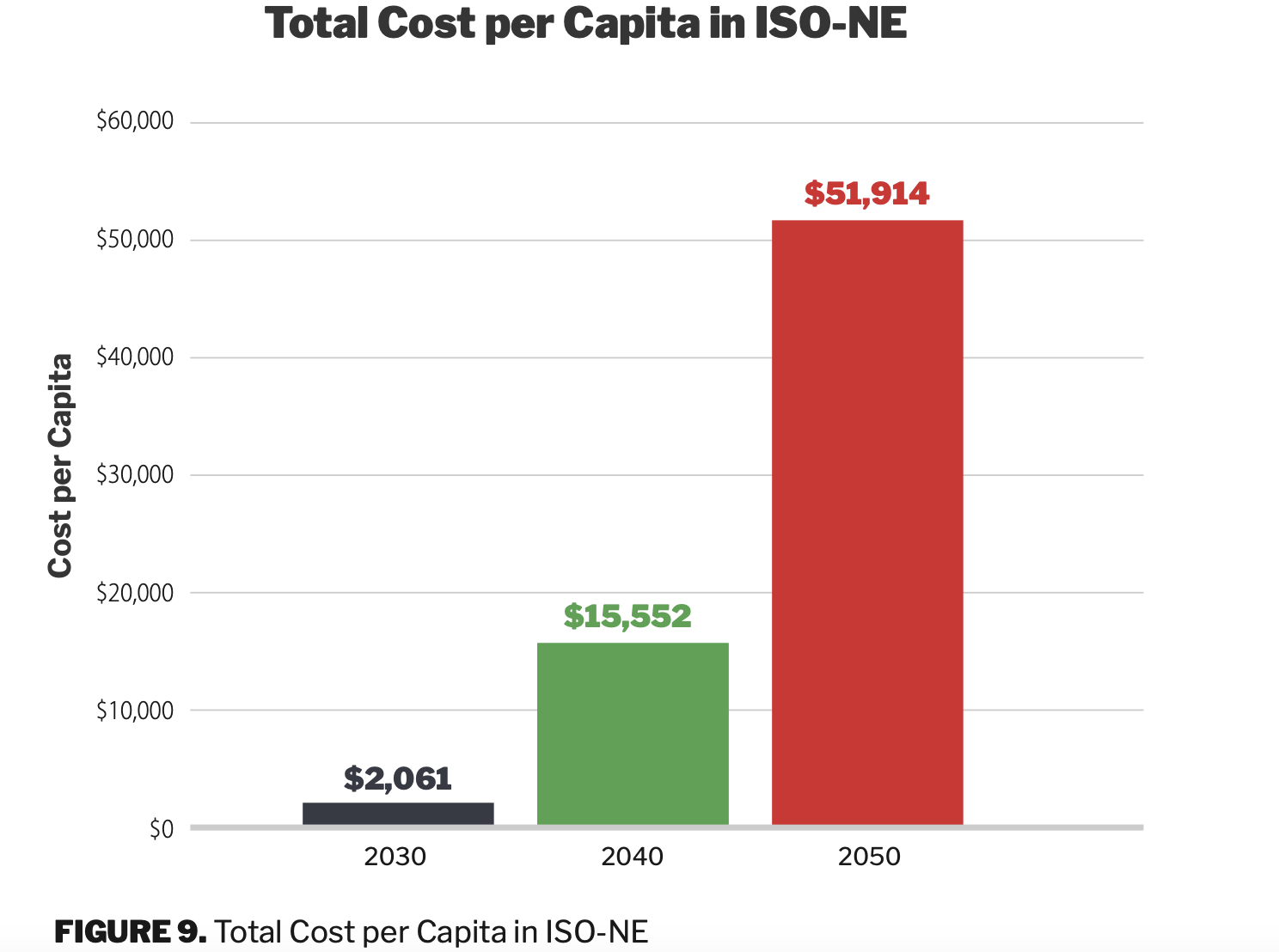Staggering. Mind boggling. Shocking. Inconceivable. All words no one wants associated with their future energy costs. Yet, that’s what we found when we modeled the cost and reliability impact of the six New England states’ energy policies on the group’s residents within ISO-NE (New England’s regional electricity transmission organization that schedules electrity supply to meet demand).
Key findings of the report The Staggering Cost of New England’s Green Policies:
- An estimated $815 billion additional cost to New England ratepayers by 2050, excluding federal subsidies.
- A required buildout of 225 GW of renewable energy capacity, including offshore and onshore wind, solar, and battery storage.
- Significant risks of prolonged blackouts due to the inherent intermittency of renewable energy sources.
- Doubling of electricity rates, with residential, commercial, and industrial customers facing substantial cost increases.
- Environmental, Social, and Governance (ESG) policies compounding financial burdens by impacting public pension funds and increasing heating costs through premature hydrogen rollout.
New Englanders are tough. They’re accustomed to braving frigid winters – but they may not be prepared for what’s coming over the next decade – seismic shifts to their electricity generating system – that will leave them colder and poorer – if new energy policies are not put in place.
Of the six New England states (Connecticut, Maine, Massachusetts, New Hampshire, Rhode Island, and Vermont), all but New Hampshire have committed to reducing their carbon dioxide emissions by at least 80% by 2050 (Net Zero policies). Our research finds that this decarbonization scheme will create significant economic burdens for consumers and businesses alike, make the energy grid less reliable – especially in major weather events, and offer minimal climate benefits.
The Economic Burden
New England ratepayers can expect to pay an estimated $815 billion more for energy by 2050, excluding federal subsidies. This staggering price tag translates into a doubling of electricity rates, with residential customers paying an additional $99 annually — every year — and commercial and industrial users facing annual increases of $489 and $5,280, respectively. These increases pose a severe financial strain for families and businesses already navigating high living costs.
Grid Reliability Risks
The transition to renewable energy, such as wind, solar, and battery storage, introduces significant reliability challenges. Unlike traditional power plants, renewable sources are inherently intermittent and cannot consistently meet demand, especially during peak winter months. The projected buildout of 225 GW of renewable capacity, including thousands of wind turbines and millions of solar panels, still falls short of ensuring a stable energy supply. Blackouts and prolonged outages could become a reality for New Englanders.
Minimal Climate Impact
Despite these efforts, the climate benefits of New England’s decarbonization policies are limited. The region accounts for less than 0.4% of global emissions, raising questions about the cost-effectiveness of these ambitious goals. The environmental return on investment does not justify the steep economic and social costs.
Policy Solutions
To address these issues, the report advocates for pragmatic reforms. These include lifting nuclear energy moratoriums, which offer a reliable and carbon-free alternative, and enhancing transparency in power purchase agreements to give ratepayers clarity on costs. Additionally, nuclear energy should be allowed to compete equally with wind and solar to ensure reliability.
We suggest the states reconsider decarbonization goals, lift nuclear moratoriums, and enhance transparency in power purchase agreements to ensure reliability, affordability, and sustainability. Otherwise these six states will face staggering costs.

